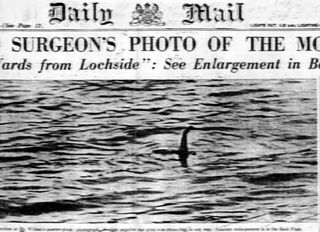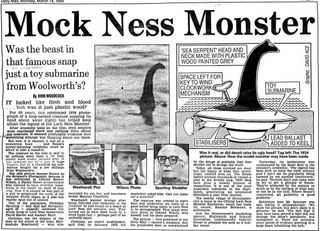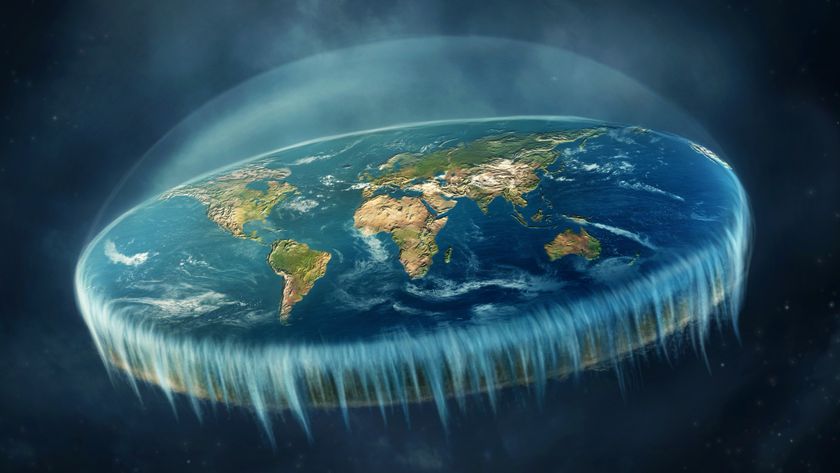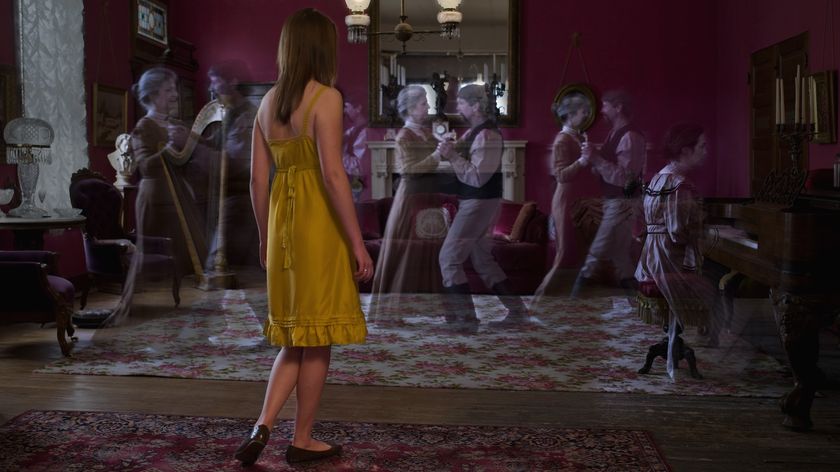Loch Ness Monster: Facts About Nessie
Though there are dozens, if not hundreds, of lake monsters around the world, one superstar marine denizen outshines them all: Nessie, the beast said to inhabit Scotland's Loch Ness.
Some say it's a myth; others say it's a living dinosaur or even a sea serpent that swam into the lake before it became landlocked. Whether real or fictional, it is what Scotland is best known for around the world (aside from whiskey, bagpipes and kilts).
Some claim that the Loch Ness monster was first reported in A.D. 565, when — according to Catholic legend — St. Columba turned away a giant beast that was threatening a man in the Ness River, which flows into the lake. However tempting it is to suggest that the encounter was a true historical record of the beast's existence, it is only one of many church myths about righteous saints vanquishing Satan in the form of serpents and dragons.

In fact, there are no reports of the beast until less than a century ago. The Loch Ness monster first achieved notoriety in 1933 after a story was published in "The Inverness Courier," a local newspaper, describing not a monstrous head or hump but instead a splashing in the water that was described as appearing to be caused "by two ducks fighting." Some suggested a more monstrous explanation; however it wasn't until the following year that Nessie shot to superstardom with the publication of a famous photograph showing a serpentine head and neck. That image, taken by a London surgeon named Kenneth Wilson, was touted for decades as the best evidence for Nessie — until it was admitted as a hoax decades later. [Countdown: Our 10 Favorite Monsters]
Civic pride
In 2010, archives shed some light on how seriously some locals took the monster. William Fraser, the chief constable of Inverness-shire in the 1930s, wrote a letter to a government official noting that a man from London, Peter Kent, "stated that he was having a special harpoon gun made and that he was to return [to Loch Ness] with some 20 experienced men on August 22 for the purpose of hunting the monster down." Fraser added that he warned Kent not to hunt for the creature, and suggested that some official government protection might be established: "That there is some strange creature in Loch Ness seems now beyond doubt, but that the police have any power to protect it is very doubtful."
Like other reputed lake monsters around the world, those who are convinced that Nessie exists have tried to pass legal measures to protect them. There is of course a strong incentive to protect monsters like Nessie, even if only symbolically: tourism. Loch Ness is by far the main tourist draw in the Scottish highlands. It's a beautiful lake in its own right — as is the town of Inverness on its shores — but tourists come from all over the world hoping for a glimpse of the famous monster.
Though people often speak of Nessie as a solitary animal, if it exists there must, of course, be many of them in the lake — not just one or two but dozens or hundreds. This is because of biological and genetic pressures; there must be a breeding population of them to have survived in the lake.

Elusive beast
Dozens of inconclusive and ambiguous photos, films, and videos have surfaced over the years, but the monster apparently has not. Loch Ness itself has been repeatedly searched for more than 70 years, using everything from miniature submarines to divers. In 2003, a team of researchers sponsored by the British Broadcasting Corporation (BBC) undertook the largest and most comprehensive search of Loch Ness ever conducted. They scoured the lake using 600 separate sonar beams and satellite navigation. One of the lead searchers, Ian Florence, was quoted in a BBC news release: "We went from shoreline to shoreline, top to bottom on this one, we have covered everything in this loch, and we saw no signs of any large animal living in the loch."
The Loch Ness monster story is buoyed by occasional photographs and sightings, though there is no hard evidence of Nessie's existence: no bodies (or even parts of bodies) have been found on the lake bottom or washed ashore.
Though the evidence for Nessie has been contaminated by hoaxing, many sightings are likely honest mistakes and misidentified encounters with birds, swimming deer, seals, waves, or even logs. For every lifelong local who swears he's seen the creature, another dozen insist they've never seen anything unexplainable on the loch — though they're always happy to take hopeful tourists out by the boatload.
For those who can't make it to Scotland to search for the mythical beast, you can now hop online. The Loch Ness is now on Google Street View, meaning you can explore just about every inch of Nessie's home, which extends about 23 miles (37 kilometers), while sitting behind a computer. Such digital adventurers can search above and below the surface of the lake, connected to the River Oich to the south and the Bona Narrows to the north.
Benjamin Radford is deputy editor of "Skeptical Inquirer" science magazine and author of six books including "Lake Monster Mysteries: Investigating the World's Most Elusive Creatures." His website is www.BenjaminRadford.com.
Related:
Sign up for the Live Science daily newsletter now
Get the world’s most fascinating discoveries delivered straight to your inbox.













